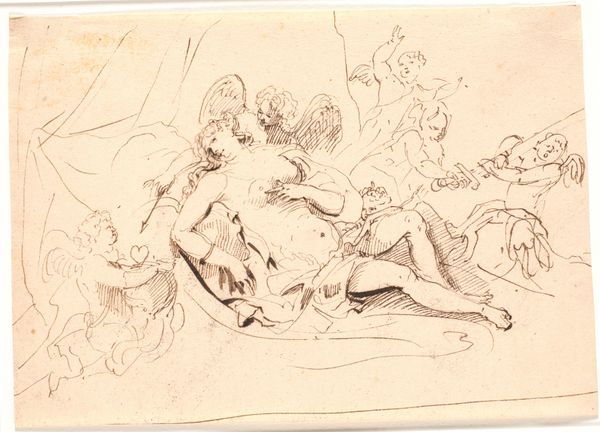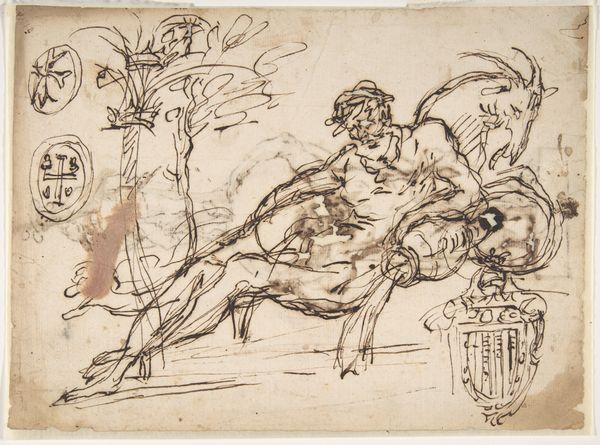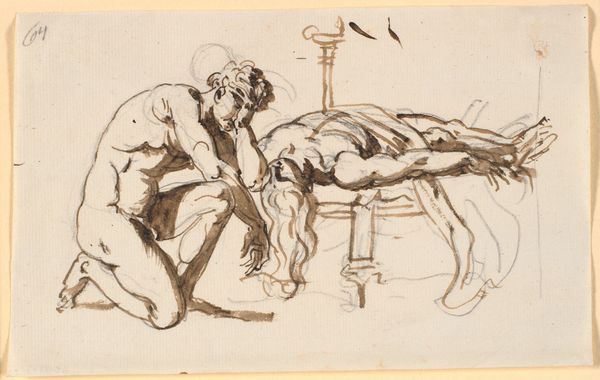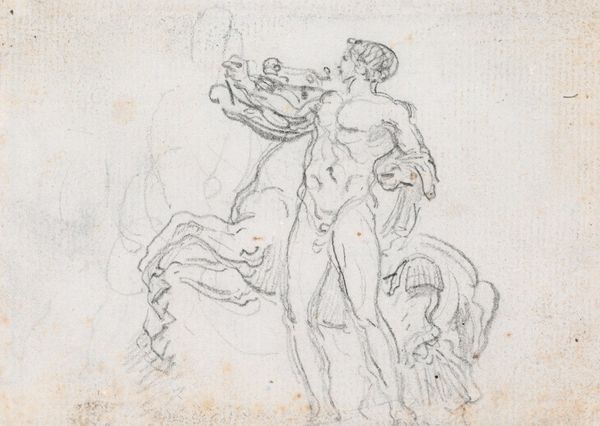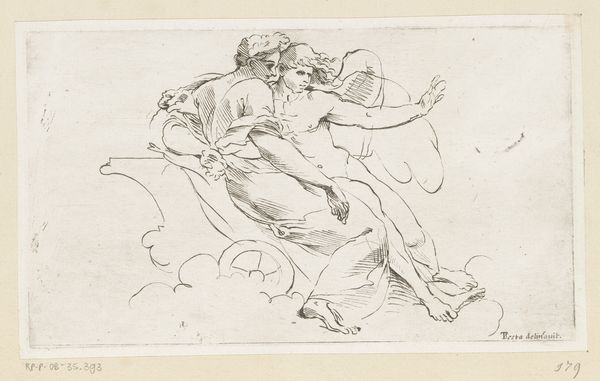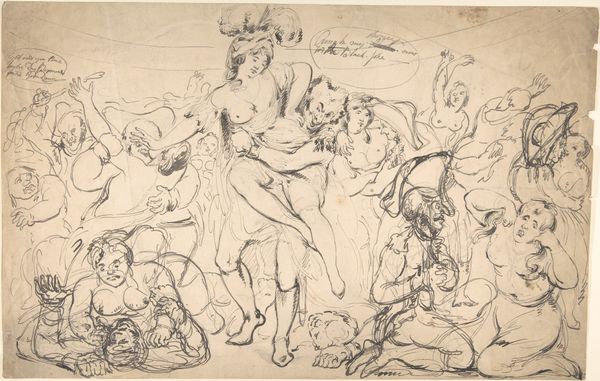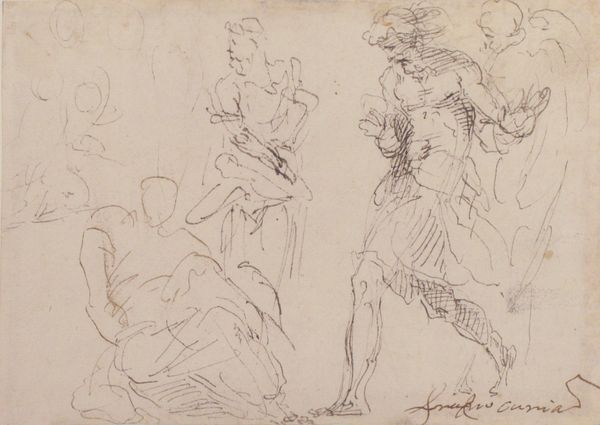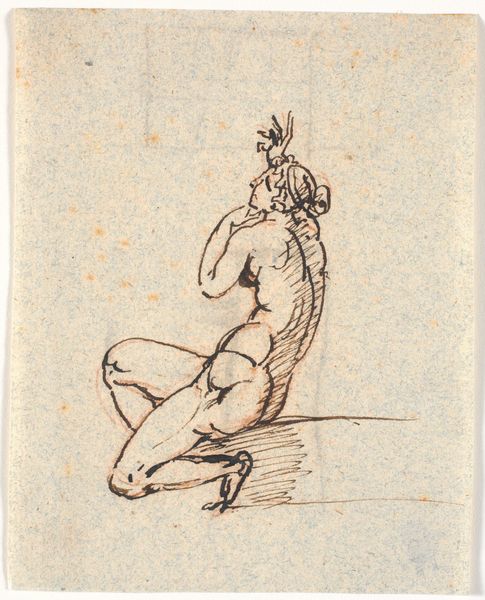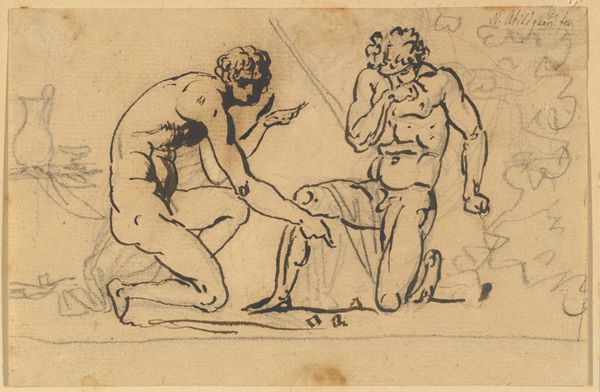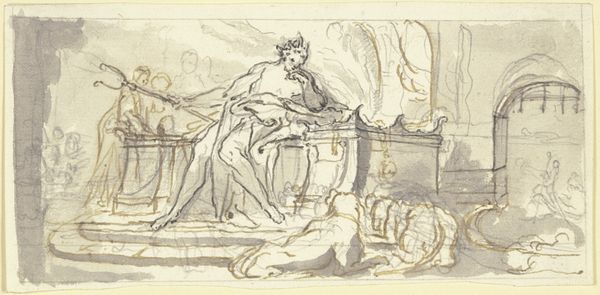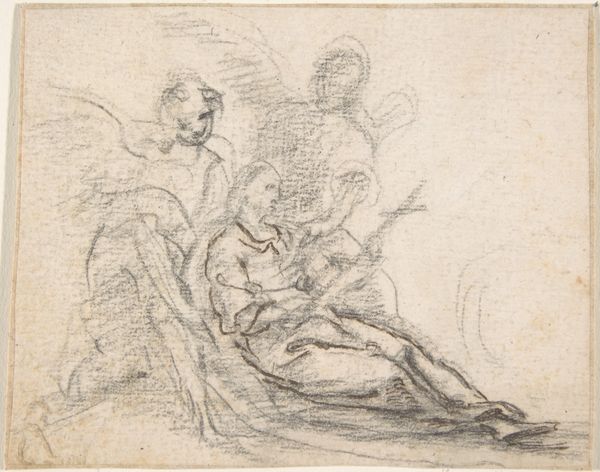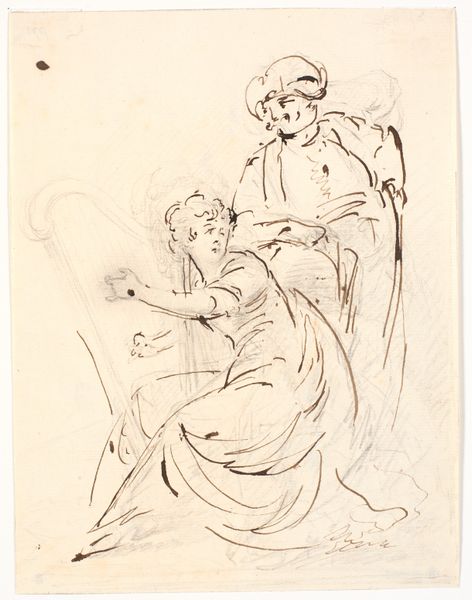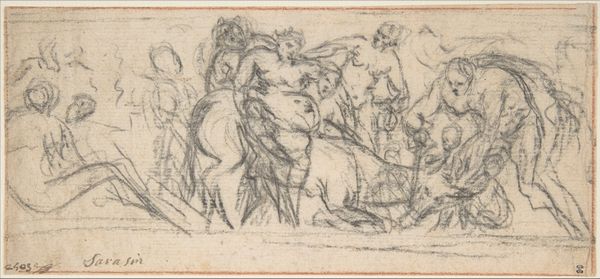
drawing, ink, pencil
#
portrait
#
drawing
#
figuration
#
ink
#
romanticism
#
pencil
#
history-painting
#
nude
Dimensions: 91 mm (height) x 134 mm (width) (bladmaal)
Editor: This drawing, "Lesbia og Catullus," attributed to Nicolai Abildgaard, dates from the 1800s. It’s rendered in pencil and ink. What strikes me is its preliminary feel, like a sketch, capturing a very private moment. What's your perspective on this piece? Curator: From a materialist standpoint, the choice of pencil and ink reveals a deliberate intention, offering insight into the artistic process. This wasn't about creating a finished object, but perhaps exploring the dynamics of classical subjects through the directness of drawing. We see labor immediately, raw lines capturing fleeting motion and suggestive of preparatory sketches, challenging assumptions of high art as distinct from utilitarian draftsmanship. Editor: I see what you mean. The drawing feels quite immediate, a moment captured rather than a carefully constructed scene. What about the way the artist represents these figures, particularly their nudity? Curator: Consider how the use of line constructs not just the figures but their relationship to the chairs they occupy. Abildgaard here is engaging with Romantic notions, emphasizing emotion. This romantic viewpoint also allowed some freedom in sketching the human body as an expression of feelings without the constraints of historical context, by going straight into drawing using pencil and ink. Do you see an awareness to that here? Editor: Yes, now that you mention it, the bodies seem less idealized, more… real. The rough, unfinished lines even enhance this impression of raw emotion, rather than striving for perfect form. Curator: Exactly! So how do you think the medium and method inform the reception to classical nude representation, considering the audience it will likely be consumed by? Editor: It becomes more about the creative process, perhaps more egalitarian because the lack of formal perfection might make art seem more accessible and relatable. This perspective changes my interpretation of it, definitely! Curator: And that change comes about by paying attention to how it was made and the hands and material constraints involved in making it. Thank you!
Comments
No comments
Be the first to comment and join the conversation on the ultimate creative platform.
